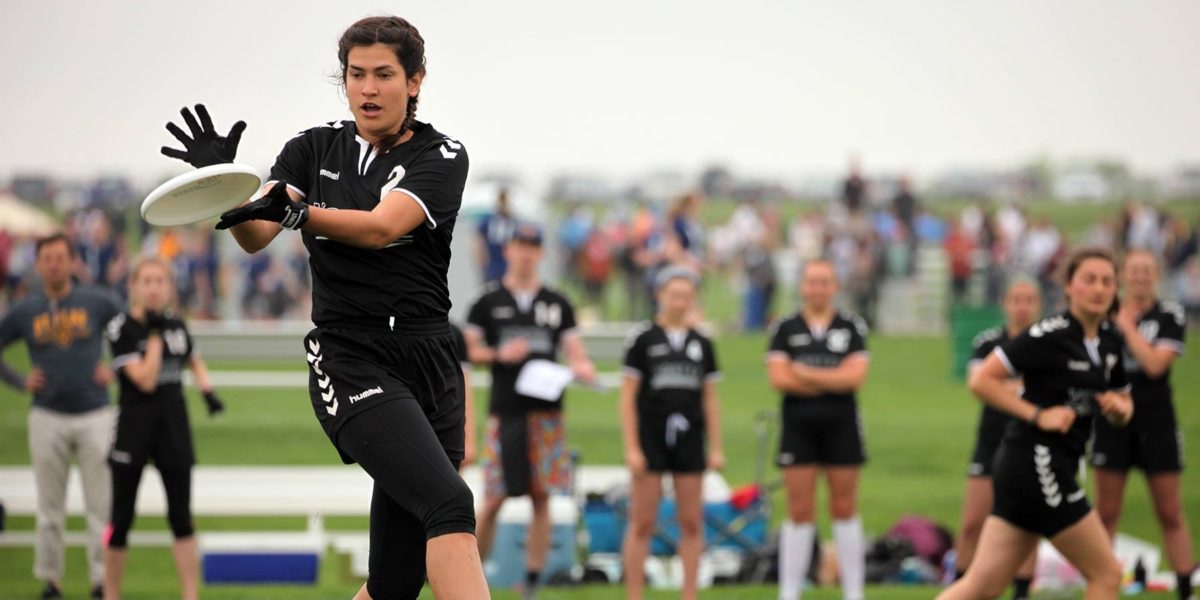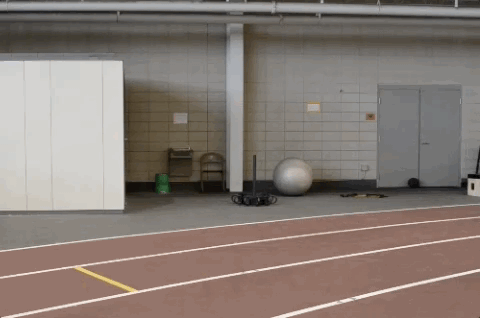 Photo by Cathy Zielske
Photo by Cathy Zielske
Part 2: Deceleration
Deceleration utilizes the eccentric contraction of the muscles. An eccentric contraction is a controlled lengthening of the muscle. If you think of a bench press, it’s the part where you bring the bar down slowly so it doesn’t crush your neck. Similarly, it’s the controlled lengthening of your calves, quads, hamstrings, and glutes that slow you down from a sprint to a stop. Simply put, eccentric contractions are the absorption of force.
Eccentric actions are also extra hard on your muscles. Those muscles are responsible for absorbing the hundreds of pounds of force being transferred through your body into the ground via our every-fragile knee. For this reason it’s important to use proper technique to promote efficiency and joint safety. The last thing we want is to try to absorb all that force in one step, have our shin go one direction, our thigh go another, and be left lying on the ground with a couple torn ligaments. If we’re approaching a significant angle with significant speed, we want to spread those ground contacts with quick, choppy steps. Lowering our hips while we chop our feet will also help us chop more quickly and over a shorter distance.
Exercise 1: Choppy stops

At a distance of about 15 meters, have the athletes jog at 50%. Once they reach the line, tell them to sink their hips and chop their feet to decelerate as quickly as possible. Though it’s not necessary to use more than 3-4 steps to come to a complete stop, everyone should exaggerate the number of steps and the drop of their hips so that it’s more natural at faster speeds. Keep an eye on athletes to make sure their knees are staying lined up over their toes as they drop their hips. They are risking injury if their knees continually cave in.
Build up the speed to 75%, and then 90-100%. As the speed gets faster, athletes will have to drop their hips and chop their feet more to stop quickly. You can add a cone a few steps out from the stopping line to challenge your athletes to stop within a certain distance.
As mentioned before, this is tiring. Tired muscles → poor form → injuries. It’s not necessary to get to 100% effort on the first day. Try working up to 85% the first day, and add decelerations as part of your warm-ups or drills for the rest of the season.










Comments Policy: At Skyd, we value all legitimate contributions to the discussion of ultimate. However, please ensure your input is respectful. Hateful, slanderous, or disrespectful comments will be deleted. For grammatical, factual, and typographic errors, instead of leaving a comment, please e-mail our editors directly at editors [at] skydmagazine.com.